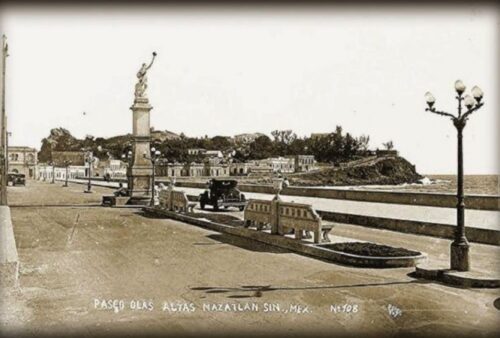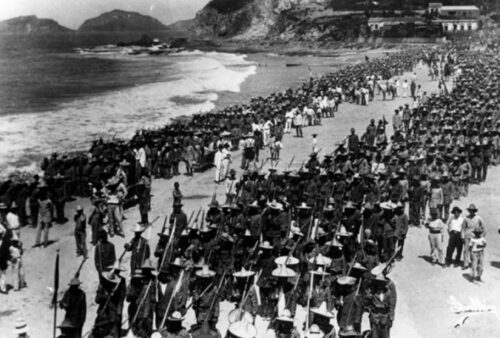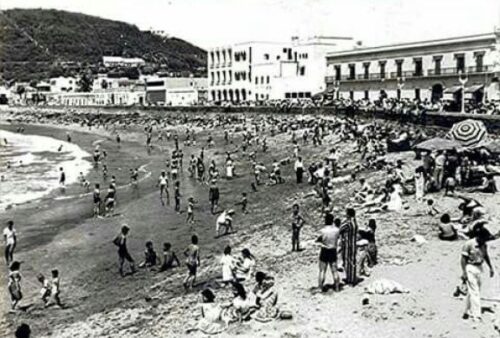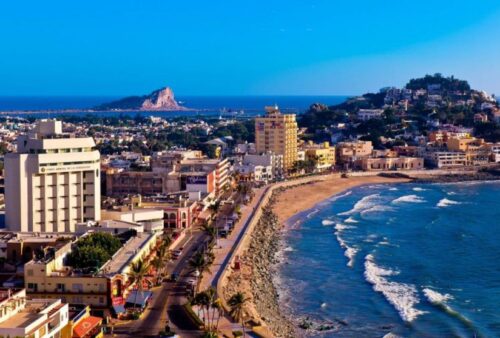Paseo Olas Altas
When talking about Mazatlán, it's inevitable not to think of the Olas Altas Promenade, one of the most iconic tourist spots in the port that holds a lot of Mazatlán's history. In this municipality, there are few streets that have kept their original names. One is Carnaval Street, and the other is Olas Altas. It was named this way due to the large waves that arise in the bay. Additionally, the area is known as a "Promenade" precisely because it has been frequented by tourists and locals for strolls.
Olas Altas is named after the large waves that arise in the bay.
The origins of this place date back to 1830 during the construction of a dike to contain the floods that were so severe that they filled Plazuela Machado with sand. The promenade was built on this dike, extending from Cerro del Vigía to the tip of the bay, where Glorieta Sánchez Taboada is located today. Many monuments in Mazatlán can be found here, such as "El Venadito" (referring to the word Mazatlán, which means "land of deer"), "La Mujer Mazatleca," "Ferrusquilla," the shields of Sinaloa and Mazatlán, the statue of Pedro Infante, "Plaza de los Enamorados," "Piedra de los Clavadistas," and the monument to Benemérito de las Américas.
Paseo Olas Altas extends for 550 meters and offers a magnificent vantage point to observe Isla del Cardón, Isla de Lobos Marinos, the famous lighthouse, ships, and boats, and of course, the stunning sunsets over the sea. Due to its high waves, it is a popular area for surfers. In the historical archive of Mazatlán, it is noted that the poet Amado Nervo lived in a wooden house on Olas Altas in 1901. An iconic structure on Olas Altas is the Belmar Hotel, also known as the "hotel of the stars," which was popular from the 1930s to the 1970s. It was built in 1922 by the Englishman Louis Bradbury, a millionaire entrepreneur who operated the Tajo Mines in El Rosario, Sinaloa.
Only two streets in Mazatlán maintain their original names: one is Carnaval Street, and the other is Olas Altas.
Another historically significant hotel is the Freeman Hotel, built in 1949 by Guillermo Freeman, a German architect. The hotel, which had 14 floors, was for many years the tallest building in northern Mexico. Historically, at the northern end of the promenade lies Cerro de La Nevería, a strategic point in the defense of the city when the French army attempted to disembark in the port in March 1864.
In August 1914, the boardwalk of Olas Altas was the scene of the taking of Mazatlán by revolutionary troops, marking the last armed confrontation in this city during the Mexican Revolution. For all these reasons, Olas Altas has been a great witness to the history and culture of Mazatlán, its festivities, especially the iconic Carnival held year after year.
¿Sabías que?
El poeta Amado Nervo, vivió en una casa de madera en Olas Altas, en el año 1901.
📍 Ubicación
Paseo Olas Altas, Centro, 82000 Mazatlán, Sin.







